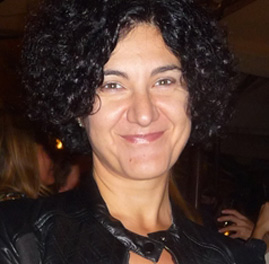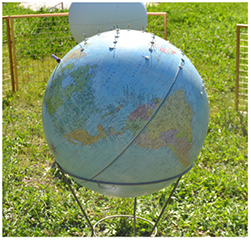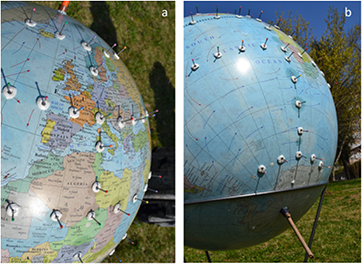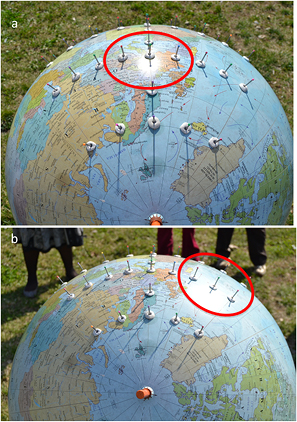Abstract
Many researchers have documented the difficulties for learners of different ages and preparations in understanding basic astronomical concepts. Traditional instructional strategies and communication media do not seem to be effective in producing meaningful understanding, or even induce misconceptions and misinterpretations. In line with recent proposals for pedagogical sequences and learning progressions about core concepts and basic procedures in physics and astronomy education, in this paper we suggest an intermediate, essential step in the teaching path from the local geocentric view of the Earth–Sun system to a heliocentric one. With this aim we present data collected over a day and a year from an instrument we call the 'parallel globe', a globe positioned locally homothetic to the Earth. Some analyses are suggested, in particular of the phenomenon of illumination of the Earth and its variations, that are consistent with the proposed instructional objectives.
Export citation and abstract BibTeX RIS
1. Introduction
Since 1974, hundreds of research works on astronomy education have been performed, involving students, teachers and museum visitors from many countries and different education levels. They have shown that alternative conceptions and shortcomings in understanding basic astronomy concepts are common, widespread and present even at the highest levels of education [1–5]. The findings also suggested that misunderstandings are not deeply modified by conventional teaching [6], and can even be induced by traditional models, textbooks and images [7]. Consequently, one of the current challenges for the astronomy education community is to develop innovative methods and proposals to prevent or redress these misunderstandings.
Recently, some educational sequences and learning progressions have been proposed about basic astronomy [8–10] that take into account the general difficulties in understanding astronomy, and devote attention not only to core concepts but also scientific procedures [11, 12]. These approaches share some common features, such as the importance of starting the teaching pathway with sky observations above the local horizon using multiple representations (e.g. 3D models, body plays and gestures) to represent and interpret the data, and moving from an Earth-based to a heliocentric frame of reference using hands-on, kinaesthetic, concrete modelling strategies combined with computer simulations [13, 14].
Although the findings were encouraging and the approaches more effective than the conventional ones, further research has been recommended.
As Italian researchers in maths, physics and astronomy teaching, we found that to promote a meaningful astronomical knowledge it is essential to introduce an intermediate step between the local observations and the interpretation in the heliocentric reference frame. With this aim, we designed an innovative use of the globe that can make it an effective instrument to observe the Earth's illumination in real time and from the place where the observer is the 'parallel globe' [15]. This paper is devoted to a description of this instrument, its uses and the implications in teaching basic astronomy.
2. Preparing the instrument
The first action that has to be done to prepare the instrument is to select an outdoor site illuminated by the Sun as long as possible during the day and throughout the year. Then, the traditional globe has to be unlocked from its fixed stand and placed in the selected site on a new support in such a way that:
- the observer's country is on the highest point of the globe; and
- the globe axis is on the local meridian plane.
Using adhesive (such as modelling clay or suckers), many sticks (nails or pins) have to be fixed perpendicular to the globe's surface along the Equator, the tropics and the observer's meridian and parallel. Each stick represents a person standing on the Earth in a vertical position at that location. If the globe's position and orientation are taken as fixed, the globe is illuminated by the Sun in the same way as the Earth itself and the sticks are illuminated by the Sun as local vertical gnomons3 (figure 1).
Figure 1. The parallel globe at Sesto San Giovanni (9° 14' 00'' east, 45° 32' 00'' north), near Milan, Italy.
Download figure:
Standard image High-resolution imageOnce the parallel globe is oriented, the stick representing the observer is parallel to the observer's standing direction, the plane tangent to the globe in the observer's position is parallel to her horizontal plane, and the globe's axis is parallel to the Earth's. For these reasons, we called the instrument the parallel globe. In the literature, the same instrument has been introduced with different names: the geosynchronous globe [9] and the day/night globe [16].
3. Planning and carrying out investigation
We suggest observing the parallel globe along the equinox and solstice and at least three times a day: before, during and after the local solar noon. We also suggest taking pictures of the globe from different points of view and from different distances throughout the investigation time (figure 2). This plan was developed thanks to participation in the Globo Local Project, an international project designed (by two of the authors) to promote the use of the parallel globe around the world [16]. Obviously, other investigation plans could be designed depending on the available time and on the aim of the teaching intervention. In general, the ability to obtain astronomical information from this tool increases with use and familiarity.
Figure 2. Snapshots taken at about 10 am on the June solstice from the north (a), east (b), south (c) and west (d).
Download figure:
Standard image High-resolution imageFor long-term investigations (one year or more) or sharing data with observers in other countries, a digital archive is strongly recommended. For suggestions you can visit the public archive available at www.globolocal.net, set up in 2011 for the Globo Local Project.
4. Analyzing the data
Once the data are available, they can be analyzed looking at two variables: the terminator position across the globe surface and the pattern of the sticks' shadows. In the first case, we are looking at the Earth as a whole, and in the second one the attention is on particular conditions of certain points on its surface. Analyzing the time evolution of these variables, we can obtain information about the changes of light/shade hemispheres across the Earth's surface and changes of the Sun's pathway at different latitudes.
In the following, we present the main results that can be obtained by analyzing snapshot, daily and annual data4.
5. Snapshot observation
Instantaneous observation of the parallel globe allows us to identify the countries where it is currently day or night, the meridian at which the Sun is in transit (local solar noon) and where night to day or day to night transition is happening (figure 3).
Figure 3. Terminator and day to night/night to day transition around the globe. Looking at the globe as a whole, by some distance, you can observe the line separating the sunlit hemisphere from the shaded one. It shows the current position of the Earth's terminator and, consequently, the countries where the Sun is locally rising (a) or setting (b). It limits the countries where the Sun is over (lit part) or under (shaded part) the local horizon. Looking at the hemisphere in full Sun, you can find the halfway meridian, corresponding to the longitude where the Sun is currently culminating. Looking at the same parallel, the shadows are symmetric with respect to the noon meridian.
Download figure:
Standard image High-resolution imageIt also gives us the opportunity to obtain simultaneous information about the Sun's position along the parallels (in particular along the tropics, the Equator and the observer's parallel) or the meridians. In addition, it allows us to infer how the Sun's position at the local solar noon changes as a function of the latitude and to find the point where the Sun is currently culminating at the zenith (figure 4).
Figure 4. The solar transit over the local meridian. Looking at the size and direction of each stick's shadow, you can get information about the Sun's position for the observer represented by that stick. Observing the instrument at the local noon, all the sticks placed along the local meridian cast their shadows along the meridian itself. Moreover, there is a stick without shadow separating the ones with shadows directed toward the North Pole (a) or South Pole (b). It individuates the latitude where the Sun is culminating at the zenith and separates the latitudes where the Sun culminates above the south (a) or north (b) respectively. Looking at the same parallel, you can see that the shadows of the sticks are symmetric with respect to the local meridian.
Download figure:
Standard image High-resolution image6. Daily observation
Daily observation of the parallel globe gives us the opportunity to visualize how the lit/shaded hemisphere changes through the day and, consequently, the places going into day or night. It also gives us the chance to calculate the day-length as a function of the latitude simply by looking at the lit part of the corresponding parallel (figure 5). Finally, it allows us to observe how the local illumination conditions change from one point to another and how the Sun's pathway depends on latitude (figure 6).
Figure 5. The daily movement of the Earth's terminator and the latitude-specific day-length differences. Looking at the parallel globe during the June solstice, before (a) and after (b) noon from the north, you can see that the terminator moves from east to west, 15° h−1, remaining tangent to the same pair of parallels for almost all the day. Consequently, the angular amplitude of the lit part of each parallel remains constant during the day as well as the day-length at fixed latitude. You can calculate this by dividing the measured angular amplitude of the illuminated part of the corresponding parallel by 15°. For each day, you can find the latitudes where the day-length is less, equal or more than 12 h. In particular, you can find the latitudes where the Sun does not ever set or rise during the day.
Download figure:
Standard image High-resolution imageFigure 6. The solar transit over different meridians and the latitude and longitude-specific solar path differences. Recording the pattern of the sticks' shadows during the June solstice, at noon (a) and after noon (b) from the north, you can see that it moves 15° h−1. Indeed, comparing the shadows along the observer's parallel before, during and after local solar noon, it can be seen that the pattern of shadows cast by sticks along one parallel (same latitude and different longitude) at a certain time, is identical to the shadows' pattern produced by one stick during that day. Therefore, all observers on the same parallel see the same path of the Sun above their (astronomical) horizon and have the same number of light hours.
Download figure:
Standard image High-resolution image7. Annual observation
Annual observation gives us the opportunity to visualize the annual cyclical movement of the terminator across the Earth's surface and the resulting changes of the day-length and of the Sun's observed path at different latitudes. In particular, it allows us to find the Earth's zones where day or night can last 24 h (figure 7) and where the Sun can culminate at the zenith position (figure 8).
Figure 7. The annual movement of the Earth's terminator and the annual changes in latitude-specific day-length. Observing the parallel globe during the year, you can see that the pair of parallels at which the terminator is tangent changes from day to day in a continuous way, and it is always between the polar circles and the poles. In particular, it is possible to observe that: (1) at the December solstice, the terminator is tangent to the polar circles, the whole Arctic area is in shade and the Antarctic one illuminated; (2) at the March and September equinoxes, the terminator passes through the poles (a); (3) at the June solstice, the terminator is tangent to the polar circles, the whole Arctic area is illuminated and the Antarctic one is in shade (b). You can note that the Equator is always half enlightened and consequently the day-length at the Equator is always 12 h. You can also see the annual cyclic variation of daytime at each latitude.
Download figure:
Standard image High-resolution imageFigure 8. The annual changes in latitude-specific solar path. Recording the patterns of the sticks' shadows during the year, you can find the parallel where the Sun culminates at the zenith. It results in parallel changes from day to day in a continuous way and it is always between the tropics. In particular, you can note that: (1) at the December solstice, the Sun culminates at the zenith for observers on the Tropic of Capricorn; (2) at the March and September equinoxes, the Sun culminates at the zenith for observers on the Equator (a); (3) at the June solstice, the Sun culminates at the zenith for observers on the Tropic of Cancer (b).
Download figure:
Standard image High-resolution imageTable 1 summarizes some of the results that can be obtained observing the parallel globe during the equinox and the solstice: the terminator position, the parallel where the sunlight strikes the surface perpendicularly, the latitude changes of the day-length and the Sun's altitude at the local solar noon.
Table 1. Summary of some basic astronomical information obtained using the parallel globe.
| March equinox | June solstice | September equinox | December solstice | |
|---|---|---|---|---|
| Position of the Earth's terminator | Through the poles | Tangent to the polar circles; the Arctic polar zone is fully enlightened and the Antarctic polar zone is fully shaded | Through the poles | Tangent to the polar circles; the Antarctic polar zone is fully enlightened and the Arctic polar zone is fully shaded |
| Parallel where the solar radiation is perpendicular to the Earth's surface | Equator | Tropic of Cancer | Equator | Tropic of Capricorn |
| Day-length | 12 h, latitude independent | 24 h in the Arctic polar zone | 12 h, latitude independent | 24 h in the Antarctic polar zone |
| 12 h at the Equator | 12 h at the Equator | |||
| 0 h in the Antarctic polar zone | 0 h in the Arctic polar zone | |||
| Sun altitude α at local solar noon | 0° ≤ α ≤ 90° S Northern Hemisphere | 23° 27' S ≤ α ≤ 90°S moving from North Pole to Tropic of Cancer | 0° ≤ α ≤ 90° S Northern Hemisphere | 0° ≤ α ≤ 90° S moving from North Pole to Tropic of Capricorn |
| α = 90° Equator | α = 90° Tropic of Cancer | α = 90° Equator | α = 90° Tropic of Capricorn | |
| 0° ≤ α ≤ 90° N Southern Hemisphere | 0° ≤ α ≤ 90° N moving from South Pole to Tropic of Cancer | 0° ≤ α ≤ 90° N Southern Hemisphere | 23° 27' N ≤ α ≤ 90° N moving from South Pole to Tropic of Capricorn |
8. Implications for teaching
As described in this paper, the parallel globe allows us to visualize how the Earth's illumination changes in time and across its surface. It also allows us to construct the relationship between the Sun's local pathway and the way the sunlight beam reaches the observer's position. Therefore, the parallel globe can be effective in overcoming the seasons' difficulties and help students to move in a meaningful way toward the heliocentric interpretation of local observations [17].
In teaching, the parallel globe can be used side by side with long-term investigation of the Sun over the local horizon, with the systematic use of software offering the opportunity to change position and date/hour when looking at the sky (e.g. Stellarium), and in connection with other schools around the world sharing experiences [16, 18, 19]. In this way, the learners' phenomenological knowledge is greatly enriched and a global vision can be created without losing local perspective and specificity.
In this perspective, we designed a three step learning progression introducing the geocentric point of view beside the local one, before moving to the traditional heliocentric interpretation. Based on this progression, we implemented pedagogical sequences in some primary and middle school classes and in primary teachers' university courses [20–22].
In all cases, we devoted particular attention to epistemological and historical dimensions of knowledge construction and, in particular, to the complex relationship in physics between observations and interpretations/experiments and theories [23–25]. At first sight, the parallel globe seems to suggest a geocentric interpretation of the Earth's illumination phenomenon, like any Earth-based observation. However, the interpretation of the terminator's movement needs to take into account two basic ideas of physics: relative movement and reference frame. Indeed, as clearly stated by Copernicus,
'Every observed change of place is caused by a motion of either the observed object or the observer or, of course, by an unequal displacement of each. For when things move with equal speed in the same direction, the motion is not perceived, as between the observed object and the observer, I mean it is the Earth, however, from which the celestial ballet is beheld in its repeated performances before our eyes. Therefore, if any motion is ascribed to the Earth, in all things outside it the same motion will appear, but in the opposite direction, as though they were moving past it. Such in particular is the daily rotation, since it seems to involve the entire universe except the Earth and what is around it [26].'
Becoming aware of the reasons why the scientific community has chosen to describe and interpret the phenomenon of Earth's illumination in the heliocentric reference frame means becoming aware of the true intellectual conquest and the cultural revolution started by Copernicus and Galileo.
Acknowledgments
We thank the colleagues, teachers, students and all Italian and foreign participants in our university and MCE-Sky pedagogy initiatives. In particular, we want to thank Néstor Camino and Cristina Terminiello from Patagonia (Argentina) for their contribution to a different view of the Earth and of astronomy education.
Footnotes
- 3
Here, the term gnomon, the pointer of a sundial, is used in its general meaning: a rod to measure the height of the Sun.
- 4
We have to mention that the data used in the figures were collected by Sabrina Rossi and Daniela Calò at the Giocheria Laboratori, an educational municipality of Sesto San Giovanni, near Milan (Italy), at the 2012 June solstice and equinoxes.
Biographies

Sabrina Rossi is research associate of physics education at the Physics Department of Milano-Bicocca University, Italy. Her research interests are teaching/learning physics and astronomy in compulsory school, and preparing teachers at primary and secondary levels. She is also interested in science education at kindergarten and pre-scholar levels.

Enrica Giordano is associate professor of physics education at the Physics Department of Milano-Bicocca University, Italy. Her research interests are learning progressions in physics and astronomy education from kindergarten to high school, and teachers' preparation, in school, out-of-school, and in informal settings.

Nicoletta Lanciano is associate professor of mathematics education at the Mathematics Department of the University 'La Sapienza' in Rome, Italy. She leads various pedagogical experiences and research in Italy and abroad on the understanding of geometrical and astronomical concepts by students aged 6 to 24, and adults.









